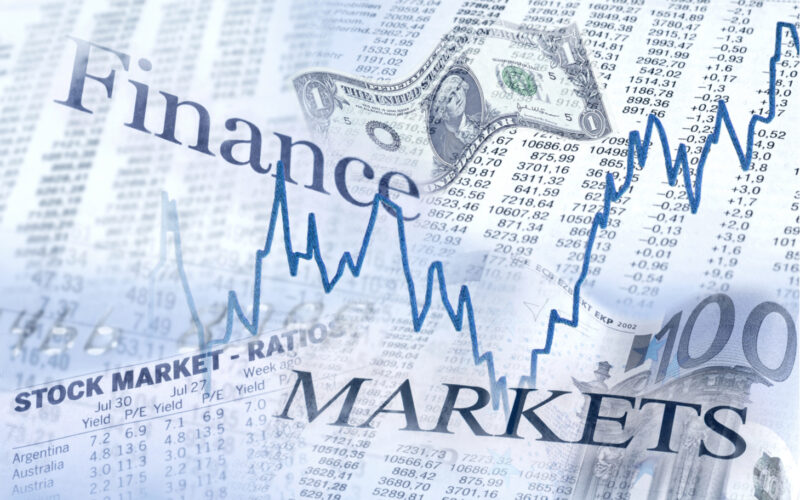On 23 March 2020, the Federal Reserve announced “QE infinity”. The American central bank began buying government bonds, corporate bonds, mortgage-backed securities and some exchange-traded funds (ETFs).
But here’s the most important part of its announcement: the purchases would be “in the amounts needed to support smooth market functioning and effective transmission of monetary policy.” That means open-ended… infinite… whatever it takes.
This was a profound moment in and of itself. But it’s what happened next that should shock you.
The stock market fell on the news. US government bonds reversed their short-lived gains and resumed their plunge within hours too.
To be clear: a buyer of last resort with, to quote the Fed, an “infinite” budget, announced it would buy just about every financial asset if that’s what it takes to restore confidence. And yet markets fell on the announcement. Confidence ebbed.
This is just extraordinary. At least, it seems that way if you’ve forgotten your history and don’t understand exactly what is going on.
The 6th turning of the global financial system
What we saw that day was not just a pandemic, not just an economic shutdown and not just a financial crisis. It was something far more profound.
We saw the beginning of the end of an entire currency system. The global financial order breaking down. Because it has run its course and that course has led to a dead end. A dead end of escalating debts, addiction to QE and never-ending bailouts.
The United States of America has managed to keep this system going, past the point of absurdity, with ever increasing desperation. But on 23 March, it lost control of the global reserve currency and thereby global financial markets and international trade.
Financial markets began to seize up and no longer make sense. They aren’t markets at all if money printers are buying everything… They’ve effectively been nationalised by central bankers.
What do you do when your computer gets this mucked up? When it freezes and stops working as it should?
You restart it.
Hit Control-Alt-Delete.
Begin again from scratch.
That’s what governments and central banks do when the financial and monetary system stops functioning. It’s called…
A Currency Reset
We’re talking about the very definition of money itself changing. A new financial order. The slates wiped clean.
No doubt that sounds far-fetched, or just weird, if you missed yesterday’s Fortune & Freedom. But as readers discovered, Currency Resets have happened many times before. Anyone who examines the history of Currency Resets would even argue we’re well overdue one by now. Which is why we did so yesterday.
But what is a Currency Reset? Well, by the end of today’s Fortune & Freedom, you’ll understand what it is. And tomorrow we’ll examine what it means for you: the ability to predict investment trends for the next few decades. Because that’s what Currency Resets do. They set the scene for what happens in the global economy during the subsequent decades by determining the new rules that govern the global financial system.
Yesterday, we gave you a taste of what I’m talking about. We looked into how global financial orders ended in the past and how they were replaced with a new one each time.
But, for anyone with any understanding of history and how well it’s rhyming with 1922, 1944, 1971, 1985 and 1987, the writing is on the wall. In fact, it’s been on the news for months.
A year ago, former European Central Bank president Mario Draghi, now the prime minister of Italy, wrote in the Financial Times that, “Higher public debt levels will become an economic feature and be accompanied by private debt cancellation”.
Bloomberg Businessweek had this sub-head in 2018: “The incumbent international currency has been American for decades. Is it time for regime change?”
The Financial Times is already discussing what’ll replace the US dollar – the International Monetary Fund’s Special Drawing Rights perhaps?
My favourite example comes from Bloomberg: “Will the Dollar Always Rule? Ask the Arch-duke. The Austro-Hungarian krone had a far bigger international presence than the U.S. currency in 1914. The coronavirus could be another Sarajevo moment.”
In her speech titled “A New Bretton Woods Moment”, which sent the shivers down my spine, Kristalina Georgieva, managing director of the International Monetary Fund, explained that we were once again at a crossroads, as we were when World War II was drawing to a close:
Today we face a new Bretton Woods “moment.” A pandemic that has already cost more than a million lives. An economic calamity that will make the world economy 4.4% smaller this year and strip an estimated $11 trillion of output by next year. And untold human desperation in the face of huge disruption and rising poverty for the first time in decades.
Once again, we face two massive tasks: to fight the crisis today— and build a better tomorrow.
We know what action must be taken right now.
[…]
We must seize this new Bretton Woods moment.
This is where we begin to see how the Currency Reset will take shape:
[…] where debt is unsustainable, it should be restructured without delay. We should move towards greater debt transparency and enhanced creditor coordination. I am encouraged by G20 discussions on a Common framework for Sovereign Debt Resolution as well as on our call for improving the architecture for sovereign debt resolution, including private sector participation.
That “private sector participation” is you, dear reader. Your pension fund’s assets, for example, probably include sovereign bonds. Will they be honoured?
Well, I don’t see how debts will be reduced without defaults. But they won’t be called defaults, of course. They’ll be called a Currency Reset. Changing the rules of the system.
What was owed to you might not be under the new rules.
Over at the World Economic Forum, the founder of the Davos meetings made things even more clear:
Every country, from the United States to China, must participate, and every industry, from oil and gas to tech, must be transformed. In short, we need a ‘Great Reset’ of capitalism.
Klaus Schwab also said that “all aspects of our societies and economies” must be “revamped,” “from education to social contracts and working conditions.”
The most blatant call for a Currency Reset comes from Jim Rickards. Former Strategic Intelligence subscribers will of course know him. Let’s just say he’s an outsider’s favourite insider, having worked for the CIA in conducting economic wargames, having helped negotiate the Iran hostage crisis and the bailout of Long-Term Capital Management, and plenty more. But Jim wrote a book predicting another Currency Reset. Or should I say a volume of books?
Based on his extensive writing, Jim expects the Currency Reset to happen soon. In fact, in a recent update to his readers, he declared “The Great Reset has arrived.”
On the 18 January, the think tank OMFIF published an article which began, “US, China must act to avoid monetary breakdown. Inflation fears show currency reset needed – but it may all end in failure.”
My point here is that a Currency Reset is not a conspiracy theory. Currency resets of the past and the future are very real. And we are at a point when one would simply make sense.
Our debt and US dollar-based international currency order has maxed out its limits and only absurdities are keeping it on life support. That life support is to buy time for a new system to be designed at a new currency conclave.
But why should investors care about something so foundational? Well, I think it’s a bit like an 18th century merchant understanding trade winds. They might not help much with what to buy and sell on a daily basis, but they determine how far you’ll go and in which direction.
More on that tomorrow. But for today, it’s time to warn you about one path the next Currency Reset might take. Our cryptocurrency editor Sam Volkering lays it out here. And how to profit from it.

Nick Hubble
Editor, Fortune & Freedom



